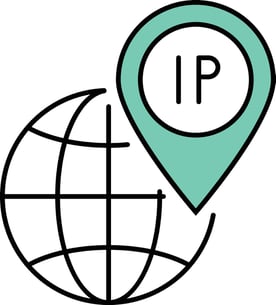Cashing Out on IPv4: Monetizing IP Addresses for Future Investments

In July 2021, the Peoples Republic of China announced the first phase of an IPv6 transition which will be completed by 2023. This means all-new network hardware in China must be IPv6 enabled.
By 2025, IPv4 addresses will no longer be available for purchase by entities in China. By 2030, all networks must be IPv6. This begs the question, “How will the rest of the world respond?”
To be competitive with China, providers and operators have about two years to monetize the IPv4 they currently have and turn those addresses into cash. That is two years to pull money back out of your prior investment before it is a buy high, sell low scenario.
CCI Systems’ engineers have years of experience implementing IPv6 and IPv4 Carrier Grade NAT, performing IPv6 readiness assessments, and developing Carrier-grade NAT (CGNAT) solutions for service providers. Our experts know how to troubleshoot and navigate IPv4 to IPv6 hiccups to successfully implement the new technology.
If your company invested $200,000 to $300,000 in an IPv4 strategy over the last five years, do not throw away the investment! Instead, monetize those IPv4 addresses while there is still demand. By saving part of your IPv4 investment, you will have the cash flow to fund infrastructure or service improvements and expansions.
Knowing how to leverage IPv4, how to monetize those IPv4 addresses, and why CGNAT is a critical part of the monetization strategy are the keys to flipping IP addresses into cash before IPv6 becomes the world standard of IP addressing.
Benefits of Leveraging IPv4 in 2022-23
As stated above, service providers have about two years to take advantage of this window. By 2023, China plans to have the main chunk of its IPv6 addressing requirements in place (i.e. all networks run IPv6 without retracting IPv4 completely). Thus, it is important to consider the criticality of this strategy and the implications of not pivoting.

If your company shows up early to the IP addressing party, you can sell your IPv4 addresses at auction before they’re phased out for the newer technology. However, this is the slow play. If you end up buying your IPv4 addresses, you will not want to sell them a day later.
Here is a brief high-level strategy.
PHASE 1 — Get accustomed to IPv4 Carrier-Grade NAT (CGNAT) and IPv6.
PHASE 2 — Install CGNAT to free up address space.
PHASE 3 — Develop a 1-year plan to sell IPv4 addresses with new cash flow.
The process is very straightforward. Your team decides to make the upfront investment to put CGNAT on your network instead of paying for more IPv4 blocks. This allows you to take advantage of your humongous chunks of address space. High availability configurations with implementation services start at the cost of about four IPv4 (Class C) blocks, which vary with market fluctuations.
Then, you sell those addresses before they drop in value. Simple, right?
Your company may have invested $250,000 in IPv4 addresses, which failing to sell at peak market prices may end up only being worth $20,000 in the not-so-distant future. Regardless, there will come a time when IPv4 devices cannot find services to connect to, even if a Class C address or two still exist.
Flip IPv4 Addresses Before 2023 with CGNAT
There are two methods for freeing up IP addressing. Effective methods do require CGNAT.
- Audit and reclaim unused user allocations to get the address space back.
- Monetize your addresses by implementing CGNAT.
Audit and Reclaim Unused Customer Allocations to Retrieve IP Address Space
To start, Option 1 is not a good revenue model long-term. If a provider goes to each business they service and perform an audit involving how much address space is being used appropriately, there is a high probability of freeing up space. One thing to note is the American Registry for Internet Numbers (ARIN) does require efficient use of the space, so the cause is justified. 
That said, if the audit does find space that is not being utilized, the service provider can take the space back and give the business a smaller block. Yet, this approach will not be popular with those existing businesses, and in most circumstances, it will not result in a significant gain.
Implement CGNAT to Monetize IPv4
To monetize IPv4 addresses while they're worth cash, a CGNAT deployment is critical. How your company deploys that CGNAT is dependent on your comfort level with IPv6 or your willingness to use the 100.64.0.0/10 address space set aside for Carrier-grade NAT.
To pull this off, there are two paths: IPv6 to IPv4 CGNAT or IPv4 to IPv4 CGNAT. Notably, some providers could benefit from going down both paths.
Start with Enabling IPv6
The end goal is to be running IPv6, so if you are not already, you should begin running IPv6 natively along-side IPv4, commonly referred to as dual-stack. To get started, fire up IPv6 internally, get comfortable with it, and see what happens.
Building a new greenfield network in a new market? Give native IPv6 in a dual-stack setup a try with a subset of the customer base. New, native dual-stack networks avoid any concern about changing existing services. Because IPv6 and IPv4 run separately, adding IPv6 to existing networks can be done without disrupting active services.
IPv6 to IPv4 CGNAT (NAT64)
End user devices know how to handle IPv6 and IPv4. They look for an IPv6 resource, and if there is no resolution with IPv6 where the client is going, the connection request is sent over to the CGNAT appliance. They’ll never know. It’s similar to IPv4 to IPv4 CGNAT—with an IPv6 lookup.
If you need to implement IPv4 on the backend for specific service needs, do it where it's necessary —and only if there are complaints. You’ll want to have some experience under your belt to ensure a smooth implementation. Start with limited packages reserved for end users who strictly engage in basic web surfing and checking email. Those users should be assigned to IPv6. This is a great way to try out 6to4 GNAT , since it’s a controlled and smaller user base.
IPv4 to IPv4 CGNAT (NAT44)
By using the IPv4 100.64 NAT addressing space set aside by the Internet Assigned Numbers Authority (IANA), you will not have to learn IPv6, but you can deploy new subnets from the 100.64.0.0/10 block to free up currently allocated public addresses. Network engineers have the opportunity to rebuild their subnetting strategy with a fresh /10 IPv4 block. You will still need to deploy IPv6 down the road (or at the same time) to enable IPv6 on your network.
This shows it is possible to migrate off some of your public IPv4 allocations without implementing IPv6 by doing NAT44—IPv4 NAT (100.64 space) to public. Customer routers get addresses from the 100.64 NAT space, a CGNAT appliance uses a single public IP for traffic from multiple customers, and the user’s network continues to operate the way it did before the CGNAT implementation. The CGNAT appliance understands what to do with protocols that tend to be problematic with NAT.
The end-to-end solution is typically referred to as NAT 444 because the customer’s inside address is translated by their router, and the service provider translates again when the traffic is handed off to the public Internet. It sounds more complicated than it is to implement and manage, and with the ability to choose which customers to use it with, the roll-out can start slow. 
Again, whether you use public IPv4 (NAT 444) and/or IPv6, the end goal is to connect your customer to Internet resources. End users will never know the difference as long as they have connectivity. That said, how the service provider manages the addresses can have a big impact on the cost per user to operate the network.
The user who hangs out on social media, surfs the web, and checks their email does not use a lot of the available network ports associated with each public address, so you can easily assign 64 end users per public address, if not more. There’s a high likelihood they’re using all IPv6-enabled services, too.
As you go up in the package tiers with heavier users who hit the network harder, they will require more ports to translate the traffic from more devices and applications. You might only assign 8-to-16 heavy end users per public address. That’s still a large reduction in overall public IP addresses needed. If you do come across an end user’s application requiring a public IP, it’s still an option if you retain enough of your public IPv4 allocation to support them.
Best Approach for IPv4 Monetization is CGNAT
CGNAT is the fastest path to freeing up public IPs in your allocated blocks, which is what leads to being able to sell them. Whether it’s 6to4 or 4to4 translation, the technology allows many users to a single user to public IP utilization.

At a lower 16:1 ratio, a single /24 (Class C) block can support 4064 users, as opposed to 254 with a 1:1 public address assignment. That’s 3,810 more customers served with one /24. At $55 per address, that’s a savings of $209,550.
Looking at that math from another perspective, the money could be made by selling freed-up public IP addresses to recoup the cost of CGNAT appliances—plus some additional revenue—or invest in other initiatives.
The key to this strategy is starting now.
If your leadership waits too long to decide, you may make the CGNAT investment, but then, you may not be able to monetize IPv4 address space. By getting a jump on the broader upgrades to IPv6, you will have the opportunity to sell while the market remains in an uptrend, or at least before it begins losing value as companies deploy IPv6 and IPv4 no longer carries much weight.
Why IPv4 Addresses are Overlooked During IPv6 Conversations
Monetization is an angle service providers can overlook. Putting in CGNAT supports IPv4 needs at a much lower public IPv4 cost as the world migrates to IPv6. Since IPv6 does not need IPv4 around, the current high demand will taper off. China’s commitment to IPv6 adoption is an indicator that we are nearing the point that IPv4 value will be decreasing.
However, from a monetization perspective, if you consider the large blocks of your current IPv4 addresses and their current value, some small providers are sitting on $100,000+ in addresses they do not need without even knowing it. Becoming cash flow positive allows the service provider to update technologies, to build or buy services to implement an advanced service (i.e. CGNAT for IPv6) onto their network, or buy licenses for more upstream bandwidth.
The moral of the story here is to take advantage of the significant piles of cash lying dormant in IPv4 addresses, which CGNAT can fix for a fraction of the original investment.
Monetize IPv4 Now to Maximize Your Profits

Monetization of IPv4 allows a company to invest back into their network.
Unlike the IPv6 mandate in China, the United States government will never issue a mandate. Yet, the U.S. government has every right to upgrade the entirety of their internal networks to stay competitive, including the military where government contractors will need to use IPv6. This action will simply cause a broader adoption by necessity for American businesses and set a standard.
The tides will shift in favor of IPv6, so let CCI Systems position your company ahead of the rush. CCI has helped providers manage the cost of network upgrades and implement NAT 444 to avoid buying more IP address space.
Our IP experts consult with the service provider to assess what the ratio should be for each IP address (e.g. 64:1 or 32:1) to then help in the purchasing or auction process. Afterward, a discussion for IPv6 implementation is always on the table.
Despite providers not needing a chunk of addresses, most will never get rid of all their IPv4 because there will always be legacy technology looming in the background. After 20 years, IPv4 will trickle away as power supplies to old routers are shut off.
Learn how to take advantage of your IPv4 blocks by consulting with an expert today or by completing a network assessment.

